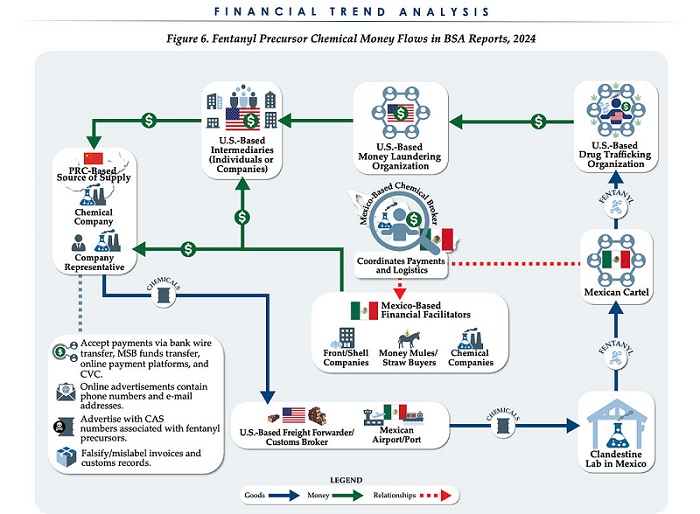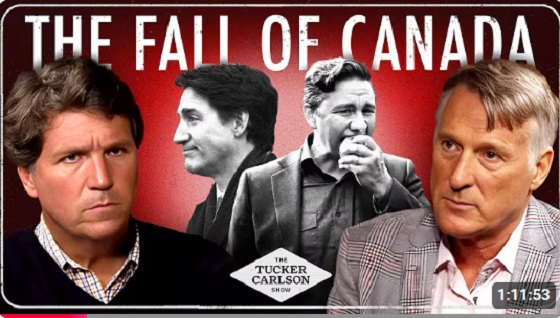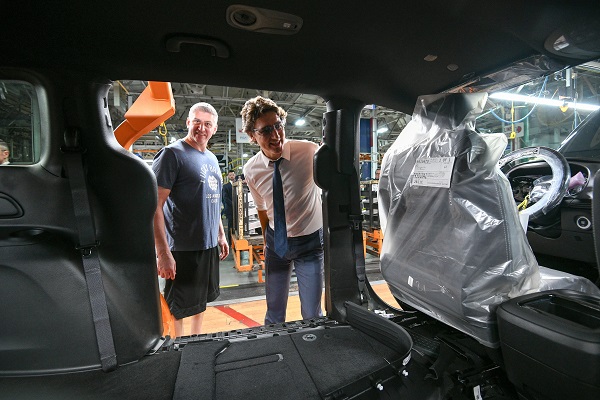Alberta
The Provincial Government’s 2018 report card on its “made-in-Alberta” energy strategy

From the Province of Alberta
Made-in-Alberta plan protects energy jobs
This year, the province fought to get top dollar for our energy resources by launching a made-in-Alberta strategy to build new pipelines and add value by upgrading more of our oil and gas here at home.
Premier Rachel Notley and her government fought to protect workers and the Canadian economy by taking action in the short, medium and long term.
“For decades, Albertans have been talking about getting more value for our oil here at home. It’s time to stop settling for less. We’re grabbing the bull by the horns with a made-in-Alberta strategy to create more jobs, open new markets for our oil and gas, and make more of the energy products the world needs.”
Major boost to energy upgrading
In the long term, the province doubled support for petrochemical upgrading to $2.1 billion, which will leverage private investment that’s expected to help create about 15,000 jobs.
Alberta also created a Liquefied Natural Gas (LNG) investment team to work directly with industry on reducing barriers for securing final investment decisions on export projects that will increase the value of Alberta’s natural gas resources.
In response to strong industry encouragement, Alberta is taking action to explore private-sector interest in building a new oil refinery in the province. Building new refining capacity would create good-paying, long-term jobs for Albertans while helping lower the oil price differential over the long term.
“Large industrial value-add energy investments help provide economic resilience and diversification, and create highly skilled, well-paying jobs for decades. Alberta has abundant feedstock, skilled labour and the ability to refine our resources to high-value products the world needs. There is significant international competition for these projects and for Alberta to compete, government and industry must work together. We commend the government’s focus on ensuring that the value of Alberta’s resources stays with Albertans.”
Fighting for pipelines and market access
The government also continued its fight for new pipelines. Premier Notley’s advocacy was instrumental in the federal government’s decision to purchase the Trans Mountain Pipeline. As well, the Premier continues to fight for needed changes on two federal bills:
- Bill C-69, which would create a new, far-reaching impact assessment process for resource development projects.
- Bill C-48, which would impose a moratorium on oil tankers off the north coast of B.C.
This year, the province also launched the nationwide Keep Canada Working campaign to explain to Canadians the benefits of new pipeline access. The latest push includes a real-time lost-revenue counter to show just how much Canadians are missing out on by keeping Alberta’s energy resources landlocked.
“Under Premier Rachel Notley’s leadership, more Canadians than ever before support this project because they know we shouldn’t be selling our products on the cheap. There’s too much at stake. We will keep the federal government’s feet to the fire so that this project isn’t delayed any further.”
Over the medium term, the government took action to build more capacity for moving oil by rail to clear the backlog and stabilize the market. Upwards of 7,000 new rail cars will come online in 2019 to move 120,000 barrels a day out of the province to markets where Alberta oil can earn the best value possible.
In the short term, Premier Notley protected the value of Alberta’s resources by mandating a temporary reduction in oil production. The decision, in response to a historically high oil price differential, has prevented thousands of job losses and helped restore the value of Alberta’s oil. The price gap is caused by the federal government’s decades-long inability to build pipelines.
Saving industry time and money
A more efficient regulatory process means new oil and gas projects can begin operating faster, creating jobs and maintaining competitiveness. The new process is fairer, faster and more accessible, saving industry hundreds of millions of dollars while making the process more transparent and accessible for Albertans. The new approach is expected to save industry $600 million by 2021, and is helping reduce the regulatory review time for an oil sands project from five years to just 15 months.
Strong energy future in the oil sands
Two major oil sands milestones were also celebrated in 2018. Premier Notley and Minister McCuaig-Boyd joined Suncor for the successful startup of the Fort Hills project, which put 7,900 people to work at the peak of construction and is employing 1,400 people full time now that the project is operational.
The government also highlighted a new $400-million investment in the Long Lake South West project by Nexen, a wholly owned subsidiary of CNOOC Ltd. With leading-edge technology, the project illustrates that a major oil sands producer can be both an energy and environmental leader while showing a long-term commitment to creating good jobs in Alberta’s energy sector.
“The Long Lake South West project demonstrates CNOOC Limited’s long-term commitment to the Alberta energy sector. Our oil sands development is an important component of our global portfolio, and through technological advancements we are pleased to be responsibly growing our production while reducing our overall emissions.”
New jobs, private investment in wind power
Private companies are partnering with First Nations to invest close to $1.2 billion in renewable energy projects in Alberta. This helps create new jobs and continues with record-setting low prices for Albertans. These results showcase Alberta as a proud leader in all forms of energy.
The five successful projects are made possible through the latest phase of the Alberta government’s Renewable Electricity Program. They include investments from homegrown Alberta companies, as well as from new investors from across Canada and around the world.
In total, the new developments will create about 1,000 jobs, attract new economic opportunities for Indigenous communities and bring an estimated $175 million in rural benefits over the life of the projects.
Alberta
Made in Alberta! Province makes it easier to support local products with Buy Local program

Show your Alberta side. Buy Local. |
When the going gets tough, Albertans stick together. That’s why Alberta’s government is launching a new campaign to benefit hard-working Albertans.
Global uncertainty is threatening the livelihoods of hard-working Alberta farmers, ranchers, processors and their families. The ‘Buy Local’ campaign, recently launched by Alberta’s government, encourages consumers to eat, drink and buy local to show our unified support for the province’s agriculture and food industry.
The government’s ‘Buy Local’ campaign encourages consumers to buy products from Alberta’s hard-working farmers, ranchers and food processors that produce safe, nutritious food for Albertans, Canadians and the world.
“It’s time to let these hard-working Albertans know we have their back. Now, more than ever, we need to shop local and buy made-in-Alberta products. The next time you are grocery shopping or go out for dinner or a drink with your friends or family, support local to demonstrate your Alberta pride. We are pleased tariffs don’t impact the ag industry right now and will keep advocating for our ag industry.”
Alberta’s government supports consumer choice. We are providing tools to help folks easily identify Alberta- and Canadian-made foods and products. Choosing local products keeps Albertans’ hard-earned dollars in our province. Whether it is farm-fresh vegetables, potatoes, honey, craft beer, frozen food or our world-renowned beef, Alberta has an abundance of fresh foods produced right on our doorstep.
Quick facts
- This summer, Albertans can support local at more than 150 farmers’ markets across the province and meet the folks who make, bake and grow our food.
- In March 2023, the Alberta government launched the ‘Made in Alberta’ voluntary food and beverage labelling program to support local agriculture and food sectors.
- Through direct connections with processors, the program has created the momentum to continue expanding consumer awareness about the ‘Made in Alberta’ label to help shoppers quickly identify foods and beverages produced in our province.
- Made in Alberta product catalogue website
Related information
Alberta
Province to expand services provided by Alberta Sheriffs: New policing option for municipalities

Expanding municipal police service options |
Proposed amendments would help ensure Alberta’s evolving public safety needs are met while also giving municipalities more options for local policing.
As first announced with the introduction of the Public Safety Statutes Amendment Act, 2024, Alberta’s government is considering creating a new independent agency police service to assume the police-like duties currently performed by Alberta Sheriffs. If passed, Bill 49 would lay additional groundwork for the new police service.
Proposed amendments to the Police Act recognize the unique challenges faced by different communities and seek to empower local governments to adopt strategies that effectively respond to their specific safety concerns, enhancing overall public safety across the province.
If passed, Bill 49 would specify that the new agency would be a Crown corporation with an independent board of directors to oversee its day-to-day operations. The new agency would be operationally independent from the government, consistent with all police services in Alberta. Unlike the Alberta Sheriffs, officers in the new police service would be directly employed by the police service rather than by the government.
“With this bill, we are taking the necessary steps to address the unique public safety concerns in communities across Alberta. As we work towards creating an independent agency police service, we are providing an essential component of Alberta’s police framework for years to come. Our aim is for the new agency is to ensure that Albertans are safe in their communities and receive the best possible service when they need it most.”
Additional amendments would allow municipalities to select the new agency as their local police service once it becomes fully operational and the necessary standards, capacity and frameworks are in place. Alberta’s government is committed to ensuring the new agency works collaboratively with all police services to meet the province’s evolving public safety needs and improve law enforcement response times, particularly in rural communities. While the RCMP would remain the official provincial police service, municipalities would have a new option for their local policing needs.
Once established, the agency would strengthen Alberta’s existing policing model and complement the province’s current police services, which include the RCMP, Indigenous police services and municipal police. It would help fill gaps and ensure law enforcement resources are deployed efficiently across the province.
Related information
-

 COVID-192 days ago
COVID-192 days agoCanadian student denied religious exemption for COVID jab takes tech school to court
-

 2025 Federal Election2 days ago
2025 Federal Election2 days agoNeil Young + Carney / Freedom Bros
-

 Business1 day ago
Business1 day agoChina, Mexico, Canada Flagged in $1.4 Billion Fentanyl Trade by U.S. Financial Watchdog
-

 2025 Federal Election2 days ago
2025 Federal Election2 days agoTucker Carlson Interviews Maxime Bernier: Trump’s Tariffs, Mass Immigration, and the Oncoming Canadian Revolution
-

 espionage1 day ago
espionage1 day agoEx-NYPD Cop Jailed in Beijing’s Transnational Repatriation Plot, Canada Remains Soft Target
-

 Business2 days ago
Business2 days agoDOGE Is Ending The ‘Eternal Life’ Of Government
-

 2025 Federal Election2 days ago
2025 Federal Election2 days agoCanada drops retaliatory tariffs on automakers, pauses other tariffs
-

 2025 Federal Election1 day ago
2025 Federal Election1 day agoBREAKING from THE BUREAU: Pro-Beijing Group That Pushed Erin O’Toole’s Exit Warns Chinese Canadians to “Vote Carefully”




